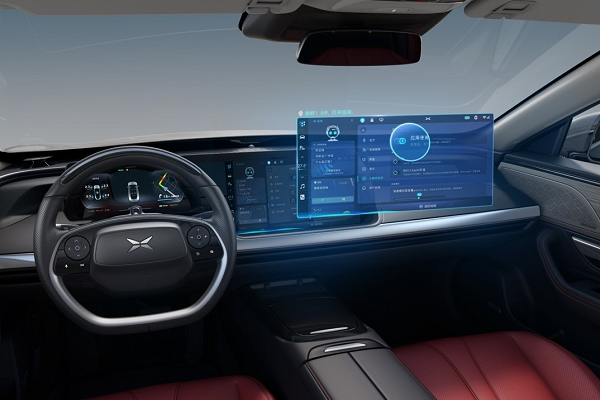Microsoft Azure Developing Non-Cortana Voice Assistant for Chinese Carmaker XPeng
 Microsoft’s Azure AI platform will power the new voice assistant for XPeng, one of China’s largest car companies. Azure is producing a customized voice assistant for XPeng by leveraging its Neural Text-to-Speech (NTTS) and other features, upgrading the XPilot voice assistant in vehicles through an over-the-air update. The partnership highlights both the rapid adoption of advanced voice tech in cars and how completely Microsoft has excised Cortana from its consumer-facing projects.
Microsoft’s Azure AI platform will power the new voice assistant for XPeng, one of China’s largest car companies. Azure is producing a customized voice assistant for XPeng by leveraging its Neural Text-to-Speech (NTTS) and other features, upgrading the XPilot voice assistant in vehicles through an over-the-air update. The partnership highlights both the rapid adoption of advanced voice tech in cars and how completely Microsoft has excised Cortana from its consumer-facing projects.
Azure XPeng
XPeng and Microsoft worked on leveraging Azure’s natural language processing and machine learning techniques to smooth interactions with the voice assistant. One of the most significant improvements is how Azure adapted the XPilot software infrastructure to store voice files and pre-set responses to lessen the incidence where unstable networks on the road would disrupt service. To make that storage feasible within the limited space of a car’s computer system, XPeng applied Azure’s cache and compression to minimize how much space the voice assistant takes up in memory and computing power.
“This is a cutting-edge exploration of vehicle voice interaction in the auto industry,” XPeng automotive AI product senior expert Hao Chao said. “The experience delivers a whole new level of natural speech. With a deep understanding of urban mobility, we are finding many more scenarios to leverage AI technology for a high level of driver-machine intuition.”
Drivers will likely note the change in the voice AI’s interactions more than the under-the-hood adjustments. Azure improved the XPilot’s speech synthesis to sound more human and conversational in tone. The improvement extends to XPilot’s understanding and pronunciation of words so that drivers won’t have to repeat themselves. That element comes out of Azure’s ongoing linguistic expansion, recently passing 100 languages, or 119 counting varients, with 278 voices available in its library.
“One hundred languages is a good milestone for us to achieve our ambition for everyone to be able to communicate regardless of the language they speak,” Microsoft Azure AI CTO Xuedong Huang said. “With more languages with their variants covered, we’re excited to be powering natural and intuitive voice experiences for automakers.”
Drive On
Azure has plenty of competition in the car voice assistant arena, as global tech giants race to nab more car manufacturers as partners. Automotive juggernaut Stellantis just inked a deal with Amazon to roll out Alexa-powered connected vehicle technology to millions of cars Amazon has been pushing to upgrade and expand Alexa’s automotive tech at an accelerating pace, with Alexa Auto SDK 4.0 and a vehicular version of the Teachable AI feature arriving over the course of a few weeks. Meanwhile, Google has been deploying Android Driving Mode updates almost every month. Last week, the company announced that Volvo owners with Google built-in will soon be able to warm up, unlock, and check the battery by asking Google Assistant on a Nest smart speaker at home. Microsoft said it has global ambitions for its automotive voice AI. The broad range of voices, including emotional expressions, could attract an international clientele, especially as Azure already has certifications to work in 90 different jurisdictions.
“With advancements in research and technology, Azure Cognitive Services like vision and speech, will play a pivotal role in defining unique in-vehicle experiences,” said Sanjay Ravi, General Manager, Automotive, Mobility, and Transportation Industry at Microsoft. “With speech as a primary interaction tool within the vehicle, Microsoft’s custom neural voice services enable automakers to develop their own differentiated and authentic branded experiences.”
Follow @voicebotai Follow @erichschwartz
Auto Giant Stellantis Will Integrate Alexa-Powered Platform into Millions of Cars
Volvo Will Embed Remote Google Assistant Commands and YouTube App in Cars
Microsoft Debuts Synthetic Speech Platform ‘Custom Neural Voice’








